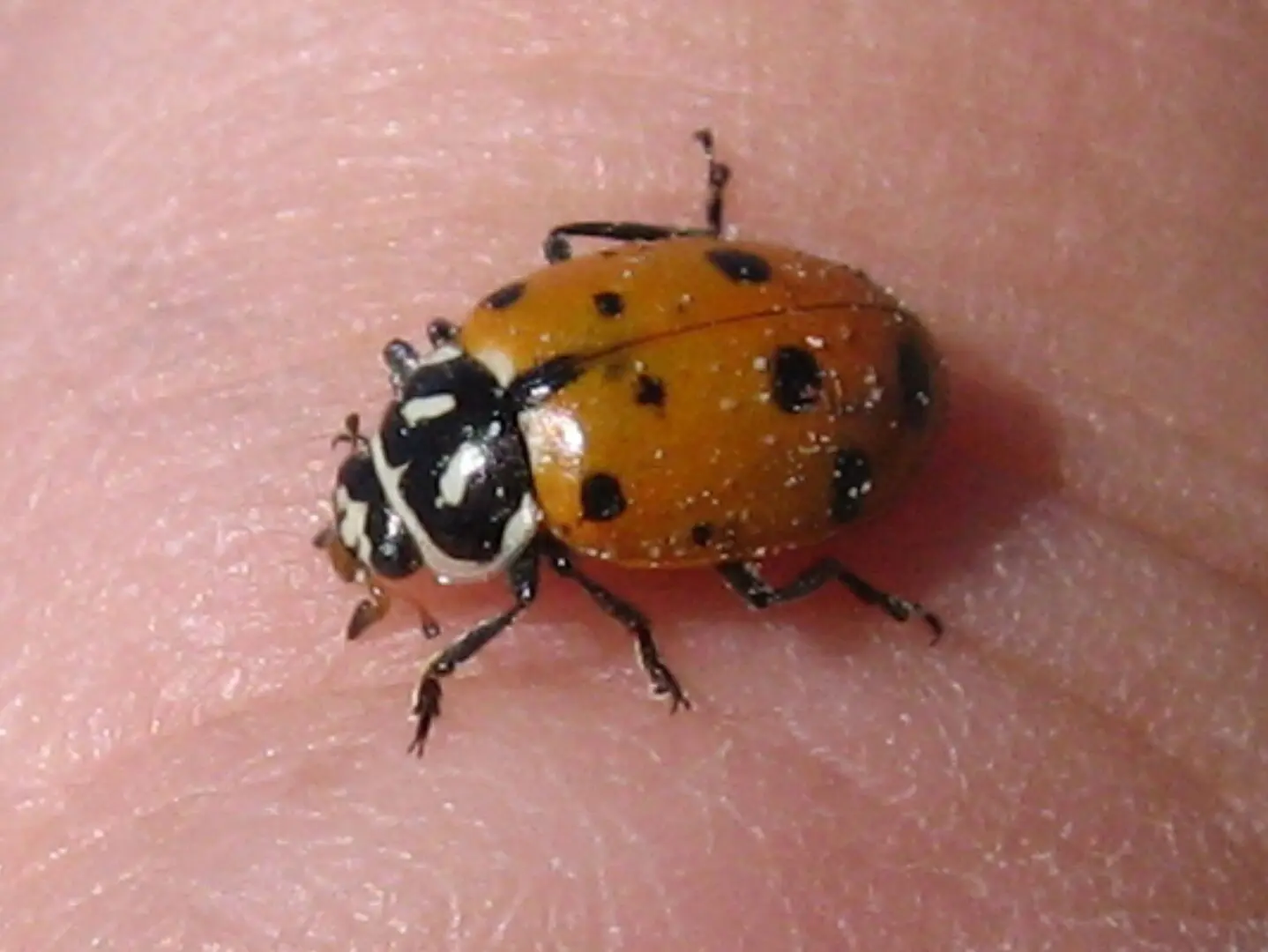The Lady Beetle (a.k.a. Ladybug)

WHAT “EYE-CATCHING” WETLANDS PARK INSECT IS OFTEN CALLED A BUG…BUT IT’S NOT?
What most of us identify as a ladybug (Hippodamia convergens) – a small, round insect with a red or orange hard shell and black dots or splotches patterned across it (but sometimes none at all)—actually isn’t a bug (which is “soft shelled”) but rather a hard-shelled lady beetle! The world of lady beetles comprises over 5,000 species around the world. Here in Clark County Wetlands Park, at least 12 species have been documented. Our photo model is one of these species, the convergent lady beetle, Hippodamia convergens. How do you differentiate the H. convergens from the 11 other species in the Park? Mostly, by the six spots on each half of the orange-red shell, with one at the base of its head. It’s the one we’ll highlight and will refer to as a lady beetle.
Convergent lady beetles are native to North America. They live in a variety of habitats, such as the “grasslands” and “woodlands” we have in the Park. Contrary to the insect’s name, not all lady beetles are “ladies.” Of course, there are male and female lady beetles, and it is very hard to tell them apart (unless they are mating). In our area, mating typically starts in early spring and will occur regularly if there is a food source. And, in the spirit of participation, the beetles will mate regularly, as most will die within a year.
Females can lay 500 to 1000 eggs over the span of a few months, mostly in the spring or early summer. In a good year, when food sources are plentiful, lady beetles can produce several generations. Eggs are laid in groups of 10 to 30 on the underside of leaves, twigs, and other places frequented by their prey. The beetles may undergo a period of suspended development (diapause) if there are limited food resources that delay reproduction. In the drier sections of the Park, this is a possibility.
The beetles LOVE, LOVE, LOVE to eat soft-bodied insects, with aphids being at the top of their list. In the Park, there is a plethora of aphids, so lady beetles have a field day! A good place to look for them is on Gooding’s willow trees, quail bushes, and stands of common reed found in its riparian habitats. You’ll find them on grasses and other bushes and trees, too.
Ants will “herd” aphids to the juiciest parts of the plants and protect them from predators like lady beetles. On the plants, the aphids get their fill of honeydew, a sugar-rich waste product of the aphids’ diet. Ants “milk” the aphids by stroking them with their antennae to get the honeydew. During this activity, the hard-shelled lady beetles have a disadvantage in snagging the aphids from the ants, which have longer legs and bigger mandibles. In these cases, and others, the beetles may use a reflexive bleeding defense method to thwart their enemies, releasing a yellowish liquid from the joints in their legs. This is liquid an alkaloid and very bitter. Note: if humans hold the beetles when they are riled up, they may “bite” with their mandibles and release this noxious liquid. Also, the bright orange-red shell is a turnoff for many of the beetles’ predators.
When female lady beetles eat, they also lay eggs. When the eggs hatch, the emerging ladybug larvae immediately start feeding on aphids. Aphids aside, lady beetles can be diverse in their feeding habits, eating other insect predators (like ants, mites, scale insects, thrips), nectar, soft parts of plants, nonadult ladybugs, fungivores (powdery mildews), and pollen. In bad years, adults will turn upon themselves.
Aphids are known pests to home gardens, farm fields, and orchards, so lady beetles have been used as beneficial biological agents to control them. Generally, they work successfully for a year or so. Here in Las Vegas, in spring 2022, Resorts World Casino Las Vegas devised a promotion to release over 100,000 lady beetles to prey on the aphids and other pests found in their beautifully landscaped gardens. Unfortunately, the lady beetles dispersed from the area (reports of up to 75 miles away) once the food sources were gone. It’s likely that the “farmed” lady beetles had been in a state of diapause, which made them want to leave the garden area even when food sources were present.
This spring, be sure to keep an eye out for lady beetles. See if you can ID the convergent species from some of the others!
– By Constance Carlson; photo by Jim Boone, www.birdandhike.com.
Please enjoy these YouTube videos:
Why Do Convergent Lady Beetles Gather?
Ladybugs Eating Aphids
Pssst: Ladybugs Have a Killer Secret
Also, please check out the delightful “Miniscule” series of children’s videos. They include the appearances and fascinating activities of insects interspersed with human activities. Frequently included are “battles” between ants and lady beetles.
